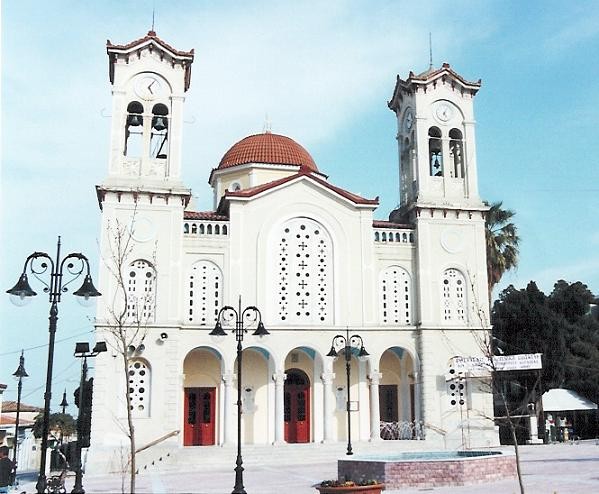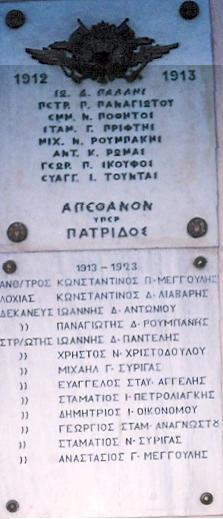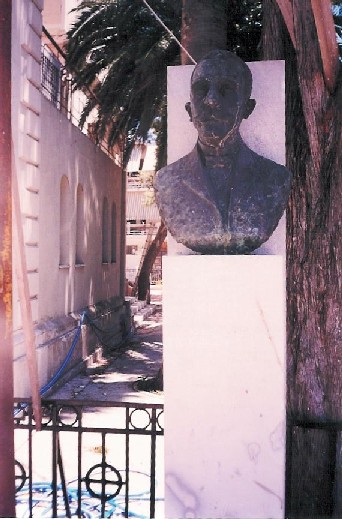

It is the most important ecclesiastical building in southern Attica and one of the most considerable of Attica. It would not be exaggeration if we consider the church as one of the most important churches of neoclassic style in Greece.
The church of st. Demetrius belongs to the architectonic rhythm of "cruciate with domes", videlicet square light oblong, accommodated in dome, supported in four columns with tall and open apses of the cross, which in their middle is raised the dome.This type is distinguished for the symmetry and the harmonious provision of members as for the unit of internal space. The internal lighting is in bload from the small and big windows. The facade is embellish by the splendid propylaia (entrance) with their corinthian rhythm columns and by two high bell towers.
It was built in 1900 by a French architect, which name was lost in the oblivion of time.
The second church without having complete half century of life it was demolished because it was very small for the needs of the town.The oral tradition rescues the following incident: when all was ready for the demolition of the second church the workers hesita-ted, for the fear of blasphemy, the mayor James Tatarakis began the demolition saying: "Oh, my saint Demetrius, I demolish you in order to make you bigger!"
The current building was built in its major part by inhabitant masters, the anaglyphs (relieves) were made by foreigner craftsmen.
The bells were manufactured in France and in Russia.
It is also important the historical value of the central chandelier, gift of the Czar of Russia for the marriage of King George I with the Russian princess Olga, which was later acquired by the church afterwards the transport of the Royal Palaces in Tatoi.
The altar was consecrated by the Metropolitan of Athens Theocletous I Minopoulos in 1906.
The Templon (separative wall between the presbytery and the nave) follow the neoclassic style and is an exceptional sample of marble sculpture. The oppositions between the green, the light blue, the red and the white marbles that dominate create a feeling of magnificence. The picture is supplemented by the marvellous sculptures.
The icons were made in the beginning of the 19th century and are coverd by precious silver covers, real masterpiecies of art.
The Pulpit, the thorakia of the Soleas (eleveted floor in front of the Templon) and the Bishop's Throne follow the paleo-christian line. It is a work of the sculptors Perrakis and Skaris and they present particular artistic interest. They were made between the yaers 1945 and 1946, years very difficult for the Greeks, the end of the German occupation and the beggining of the bloody civil war. Althought the pious christians of Keratea as when the church was built and now they did not appear less generous for their Saint Demetrius," the Filopolis Martyr" (friend and saviour of the city).
The painting of murals was limited in the eastern apse and the two eastern columns were also painted. The style was aligned with the western models that prevailed in the beginning of the 19th century, however far away from exaggeration s and rather adapted in the greek-byzantine models. The remained surfaces were covered by murals the last years following the byzantine-greek style. Unfortunately, by bad advisers the old murals were destroyed. Their place is occupied by new murals conform to the dogmatic tradition of the Orthodox Church. Today the interior of the church is painted completely with murals made with adundant mastery by the Cypriote painter Stylianos Lapourtas, in the 80's


